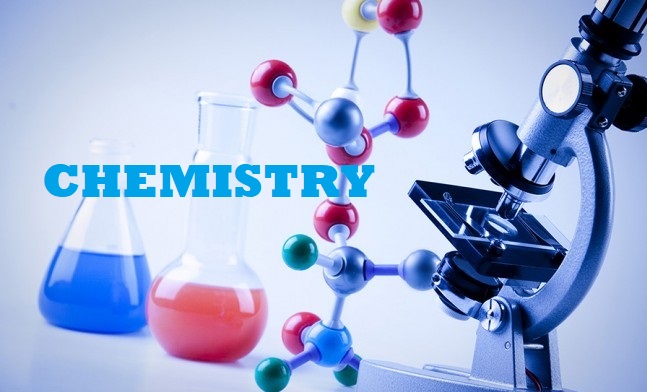TOPIC 6 : PERIODIC CLASSIFICATION QUESTIONS WITH ANSWERS ~ CHEMISTRY FORM 2
QUESTIONS
1.Multiple choice.
Choose the most correct answer.
(i) One of the following elements is not earth metal.
A: magnesium
B: calcium
C: aluminium
D : beryllium
(ii) Moving down the group ______ of metals decrease.
- Electronegativity
B: reactivity
C: ionization energy
D: melting points.
(iii) Re-occurrence of similar properties of elements in the periodic table is called _____
A: periodicity
B: atomicity
C: ionization
D: electropositivity
(iv) They display both metallic and non-metallic characteristics.
A: alkali metals
B: alkali earth metals
C: halogens
D: metalloids
(v) Odourless, colourless and stable elements.
A: halogens
B: alkali metals
C: metalloids
D: noble gases
TOPIC 6 : PERIODIC CLASSIFICATION QUESTIONS WITH ANSWERS ~ CHEMISTRY FORM 2
(vi) Always it represent the number of period in which an element found.
A: number of shells
B: electron in outer most shell
C: valency
D: valency shell
(vii) Element Q with electronic configuration 2:8:2 belongs to the group _____ and period ______
A: 2 and 2
B: 3 and 2
C: 2 and 1
D: 6 and 2
(viii) Hydrogen is placed in group I elements because______
A: it is a metal
B: it reacts by losing electron to form compounds
C: it reacts by gaining electron to form compounds
D: it is inert gas
(ix) When compared to metals, non-metals are ___________
A: good conductors of electricity
B: more brittle than metals
C: more ductile than metals
D: good conductor of heat.
TOPIC 6 : PERIODIC CLASSIFICATION QUESTIONS WITH ANSWERS ~ CHEMISTRY FORM 2
(x) Which of the following statements does not describe the alkaline earth metals?
A: they burn in oxygen to form a solid white oxide.
B: they become less reactive as they move down the group.
C: they are good conductors of heat and electricity
D: they react with water
- Matching items.
Match items in list A with responses in list B
List A
(i) Reactivity of metals in the periodic table.
(ii) Always it increases with increase of atomic number.
(iii) The distance from the centre of the atomic nucleus to the outer most shell.
(iv) Metallic characteristics
(v) Non-metallic characteristics
(vi) Elements with some metallic and non-metallic characteristics
(vii) Hallogens
(viii) Alkali metals
(ix) Alkaline earth metals
(x) Stable non-metallic elements.
List B
A: electropositivity
B: ionization energy
C: chlorine and fluorine
D: sodium and lithium
E: argon and neon
F: electronegativity
G: magnesium and calcium
H: boron and silicon
I : increase when you move down the group
J: atomic radius
K: atomic diameter
- Why argon can not react with calcium?
- Group the following elements into metals and non-metals.
-fluorine
-oxygen
-aluminium
-neon
-magnesium
-lithium
-nitrogen
-sodium
TOPIC 6 : PERIODIC CLASSIFICATION QUESTIONS WITH ANSWERS ~ CHEMISTRY FORM 2
- Identify an element which is more reactive between the following and state the reason for the element to be more reactive.
(a) sodium and magnesium
(b)chlorine and fluorine
(c) nitrogen and chlorine
(d) sodium and potassium
- Define the following terms and state the general trends of elements along the periods and down the groups
(a) ionization energy
(b) electronegativity
(c) electropositivity
(d) atomic radius
(e) boiling point
(f) density
(g) melting point
ANSWERS:
1.(i) C vi) A
(ii) C vii) B
(iii) A viii) ,B
(iv) D ix) B
(v) D x) B
2.(i) I vi) H
(ii) B vii) C
(iii) J viii) D
(iv) A ix) G
(v) F x) E
TOPIC 6 : PERIODIC CLASSIFICATION QUESTIONS WITH ANSWERS ~ CHEMISTRY FORM 2
- Argon can not react with calcium because it is stable element with eight electrons in its outer shell such that it can not form bond with other elements to make compounds.
- Metals Non- metals
-aluminium -fluorine
-magnesium -oxygen
-lithium -neon
-sodium -nitrogen
- (a) Sodium is more reactive than magnesium because reactivity of metals increase from right to left along the periods of the periodic table and sodium found more left side than magnesium.
(b) Fluorine is more reactive than chlorine because the reactivity if of non-metals decrease with decrease of electronegativity. Down the group electronegativity of elements decrease.
(c) chlorine is more reactive than nitrogen because reactivity of non-metals increase from left to right along the periods of the periodic table and chlorine is found at right side of nitrogen.
(d) potassium is more reactive than sodium because the reactivity of metals increase with increase of electropositivity and down the group electropositivity of elements increases.
TOPIC 6 : PERIODIC CLASSIFICATION QUESTIONS WITH ANSWERS ~ CHEMISTRY FORM 2
- (a)Ionization energy
Is a minimum energy that required to remove bond forming electron(s) from an atom.
It increases from left to right along periods of the periodic table and decreases down the groups.
(b) electronegativity
Is a tendency of elements to attract electron(s) toward it self. It increases from left to right along periods and decreases down the groups.
(c) electropositivity
Is a tendency of electrons to lose electron(s). It increases when moving down the groups.
(d) atomic radius
Is a distance from the centre region of an atom to to its outer most shell. It remain constant in size at the period but increases down the group due to increase of number of shells.
(e) boiling point
Is a point of temperature at which the substance change into vapour. It increases when moving down the group due to increase of metallic characteristics(electropositivity)
(f) density of element
Is a ratio of mass of an element to its volume.
It increases down the group as metallic of element increases.
(g) melting point.
Is the point at which solid substance turns to liquid.
It increases down the group as metallic characteristics increase.

























































